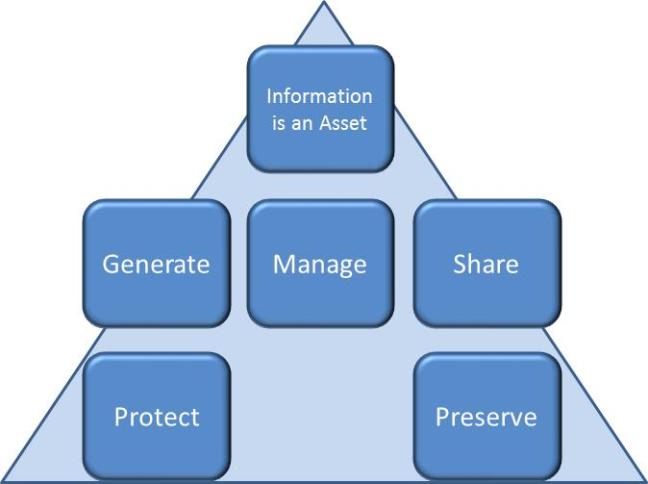In June, the Government of Luxembourg became the first EU Member State to adopt the CIMF, a framework for Corporate Information Management tailored for the European Public Sector.
The CIMF is based on a structured, holistic set of principles that encompass the different phases of the information lifecycle. These principles stress the importance of information as a critical public asset and focus on how information should be generated, managed, shared, protected and preserved. The approach emphasises the need to establish, implement and manage this framework at the corporate level.
As announced at the SEMIC conference in May, the Luxembourg government is the first public administration to decide to adopt the CIMF. The formal decision was taken by the Council of Ministers, chaired by the Prime Minister, Mr Bettel, on 10 June 2016.
The following is an extract from the press briefing of that session of the Council of Ministers:
"Dans le cadre de la mise en œuvre de la loi du 23 mai 2016 modifiant la loi du 4 décembre 2007 sur la réutilisation des informations du secteur public, la mise en place du portail Open Data et les lignes directrices concernant la publication des données, les ministres réunis en Conseil ont invité les départements ministériels, administrations et services de l’État à faciliter la réutilisation des informations dont ils disposent et de les intégrer de façon proactive dans le portail Open Data, tout en priorisant les jeux de données à haute valeur économique ou sociétale."
The technical annex of the letter from Mr Bettel to the Ministerial Departments is attached to this news item. The document is titled ‘Lignes directrices concernant la publication de données sur le portail Open Data’.
Information Management
Gilles Feith, the Luxembourg CIO, said "With the launch of Luxembourg's open data portal we recognised the need for mutual understanding by all stakeholders of the information management challenges facing our Administration. Adopting the CIMF provides us with a holistic framework, creating a common space for discussion and facilitating follow up at corporate level of agreed actions. It will be a paradigm shift in how we manage information."
The Corporate Information Management Framework (CIMF)

The figure presents a high-level view of the CIMF as a structured, holistic set of principles.
The CIMF principles are:
Principle 1: Information is an Asset
Public Sector Information is a public asset held in trust for citizens. Public Administrations have an obligation to ensure that information retained by the public sector is accurate, complete, protected, accessible and up to date at all times.
Principle 2: The Generation of Information
Information should be generated to aid policy formulation and to support policy execution using standardised formats and exploiting both internal and external sources.
Principle 3: The Management of Information
Information should be managed so as to maximise its relevance to good public administration and the creation of public value, applying ‘once-only’ strategies where appropriate.
Principle 4: The Sharing of Information
Information should be shared in ways that make it easy to (re)use, deliver and exchange and it should be made available through multiple channels.
Principle 5: The Protection of Information
Information should be protected as prescribed both in EU and national legal codes as well as public administrations’ data privacy and IT security policies.
Principle 6: The Preservation of Information
Information should be preserved to ensure continued access for as long as is appropriate in accordance with national and international legal, regulatory and archival requirements. Information which is unlikely to serve any future public purpose should be deleted.
The framework has been influenced by references in government policies and in academic and practitioner sources.
A paper presenting the framework, detailing objectives and enablers for each principle and addressing general implementation issues is also attached to this news item. The document is titled: ‘A Corporate Information Management Framework for the European Public Sector’.
Feedback and comments on this paper are welcome. Contact either Vassilios Peristeras or Declan Deasy.

